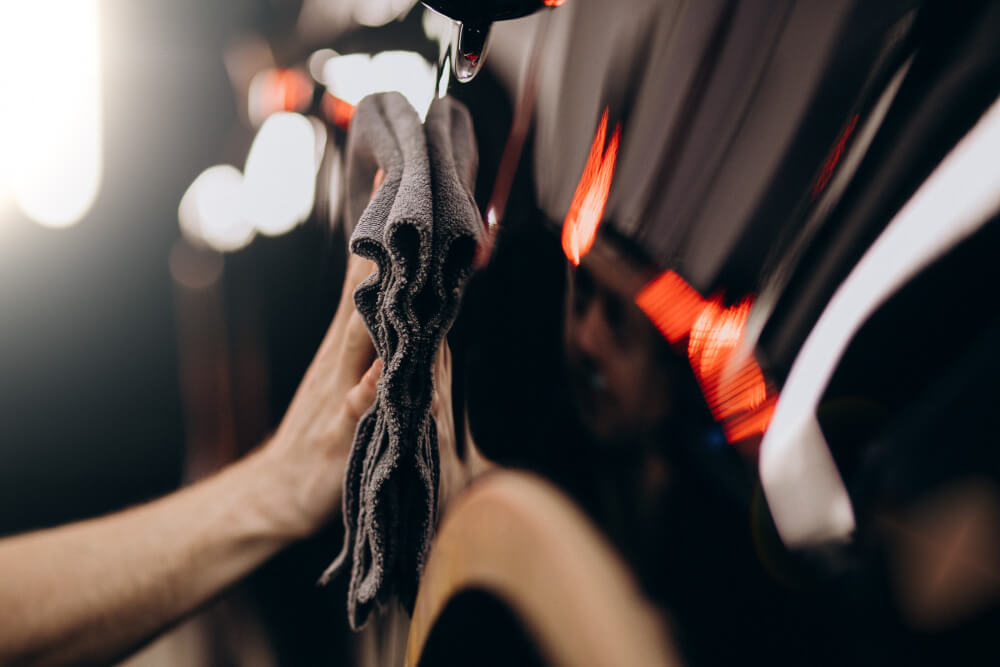Maintaining your car’s interior involves more than just vacuuming carpets or wiping down dashboards; the headliner, or the ceiling fabric, also requires special attention. Knowing how to clean it properly is essential, as the fabric is delicate, and the adhesive that holds it can easily loosen with improper care. But cleaning isn’t always enough—sometimes, replacing the headliner becomes necessary, prompting the question: How much do headliners usually cost? The answer varies widely based on vehicle type and material, with simple headliners costing a few hundred dollars and high-end replacements reaching into the thousands. In any case, proper care can extend the life of a headliner and help you avoid those costly replacements. However, should cleaning or repairs fail, it’s important to ask again: How much do headliners usually cost? Understanding these costs will guide you in deciding whether to repair, replace, or seek professional help.
Contents
How much do headliners usually cost?
Replacing a car’s headliner can range from a relatively inexpensive task to a pricey one, depending on the vehicle’s type, roof configuration, and material choice. For those with luxury vehicles or multiple roof components, costs can rise significantly due to increased labor and material expenses.
- Typical Price Range
Most headliner replacements cost under $1,000.
For luxury cars or vehicles with complex roof systems, the price can exceed several thousand dollars. The final cost depends on the type of vehicle, material, and whether accessories such as moonroofs or speakers are involved.
- Cost Estimates by Vehicle Type and Complexity
- Small Sedans (Without Accessories):
- Example: Toyota Corolla
- Replacement Cost: $400 – $700
- Reason: Simple design, fewer trim pieces, no moonroof or special components.
- Crossovers with Basic Moonroof:
- Example: Toyota RAV4
- Replacement Cost: $600 – $900
- Reason: Requires more labor to reinstall moonroof trim and seals.
- Luxury or Large Vehicles with Extensive Roof Systems:
- Example: BMW X5
- Replacement Cost: $1,500 – $5,500
- Reason: Premium materials (e.g., Alcantara), multiple trim parts, panoramic roofs, or ceiling-mounted speakers. Labor-intensive work drives up costs.
- Small Sedans (Without Accessories):
- Breakdown of Factors Impacting Costs
- 1. Labor Costs:
- Labor typically takes a half day (4-6 hours).
- Hourly Rate: Between $75 and $150 per hour, depending on the location and repair shop.
- 2. Type of Materials Used:
- Basic Headliners:
- Uses inexpensive fabric, often called “mouse fur”—the type found in economy cars.
- Luxury Headliners:
- Materials like Alcantara or Ultrasuede increase costs due to their premium texture and durability.
- Basic Headliners:
- 3. Trim Complexity:
- Vehicles with Moonroofs or Panoramic Roofs:
- Installation requires extra effort to adjust trim, seals, and water drains. This adds to labor time and cost.
- Cars with Ceiling-Mounted Speakers:
- Like Acura models with ELS STUDIO 3D sound systems, these vehicles demand more disassembly and careful reinstallation.
- Vehicles with Moonroofs or Panoramic Roofs:
- 1. Labor Costs:
- Replacement Options and Their Impact on Costs
- Aftermarket Headliner Kits:
- Suitable for common models (e.g., Toyota Corolla or Honda Accord).
- These kits are more affordable since many units are available, and the installation process is straightforward.
- Cost: Often in the low hundreds of dollars, plus labor.
- Factory-Authorized Replacement Kits:
- Available through dealerships for newer or high-end vehicles.
- Downside: Higher part costs due to OEM pricing.
- Upside: Guaranteed to match the car’s original interior perfectly.
- Best suited for vehicles in excellent condition where owners want to maintain a pristine appearance.
- Aftermarket Headliner Kits:
- When Repairs May Be More Affordable than Replacement
- Adhesive Repairs:
- If the outer fabric delaminates from the foam but is still intact, some shops can re-adhere the layers using glue or a steam process.
- Cost: Typically much lower than a full replacement.
- DIY Kits:
- Available for purchase online or in parts stores. These kits come with screws, washers, and fasteners to secure sagging areas by attaching the fabric to the foam or backing board.
- Cost: Generally under $75.
- Drawback: The repair leaves visible buttons, so the appearance won’t be like-new.
- Adhesive Repairs:
Unless caused by fire or accident, dealerships or insurers are unlikely to cover the costs.
Other Key Considerations
Water Leaks and Drain Blockages:
- Headliners often deteriorate due to leaks from moonroofs or panoramic roofs. Before replacing a headliner, the root cause of water damage (like clogged drains) must be addressed to prevent future issues.
- Repair Shop Recommendation: A trusted mechanic or body shop can unclog water drains in the roof pillars.
Extended Warranty Coverage:
- Most extended warranties exclude “soft trim” items, including headliners.
- Unless caused by fire or accident, dealerships or insurers are unlikely to cover the costs.
How long does it take to replace the headliner in a car?
Replacing a car headliner typically takes half a day (4-6 hours). However, more time may be required for vehicles with sunroofs, complex electronics, or custom material installations. The process involves disassembling multiple interior components, cleaning old foam, applying new material with precision, and reassembling everything properly.
Estimated Time:
- Approximately half a day (4 to 6 hours).
However, this duration can vary based on the complexity of the vehicle and additional factors such as sunroofs, custom materials, or removal of extra components like the ventilation system.
Detailed Steps Involved in Replacing a Headliner
- Initial Inspection (15-30 minutes):
- The technician examines the headliner’s condition and identifies the complexity of the work.
- If the car has custom elements (e.g., moonroof, speakers, or additional electronics), more planning is required.
- Component Removal (1-2 hours):
- Lights, panels, and accessories:
- All interior lights, consoles, sun visors, and electronics are disconnected and carefully removed.
- Pillars (A, B, and C):
- The front, side, and rear pillars holding the headliner in place must be taken out.
- Sunroof and ventilation system (if applicable):
- Vehicles with a sunroof require removal of sunroof trim and ventilation ducts to access the headliner.
- This phase is crucial to avoid damaging clips, electronics, or trims.
- Lights, panels, and accessories:
- Removing the Old Headliner (30 minutes – 1 hour):
- The headliner is carefully extracted from the vehicle after all connections are cleared.
- If the vehicle is large or has complex interiors (like panoramic moonroofs), this process can take longer.
- Cleaning the Old Material (1 hour):
- The technician removes the old fabric and degraded foam from the headliner board.
- A thorough cleaning ensures the new material adheres correctly.
- Applying New Headliner Material (1-2 hours):
- Gluing:
- A special adhesive is applied to both the foam layer and the fabric of the new headliner material (such as suede, vinyl, or leather).
- Precision Cutting:
- Holes are cut for lights, handles, consoles, and the sunroof, ensuring the new headliner fits perfectly.
- Gluing:
- Reinstalling the Headliner and Components (1-2 hours):
- The new headliner is reinstalled in the vehicle.
- The technician carefully reattaches pillars, lights, visors, sunroof trim, and consoles, making sure everything functions properly.
- Sunroof Upholstery Replacement (Optional – 30 minutes):
- For cars with sunroofs, it is recommended to reupholster the sunroof panel in the same material to maintain consistency.
- Final Inspection and Testing (15-30 minutes):
- The technician performs a final quality check, ensuring all components are secure and no wrinkles or sagging are visible in the new headliner.
- Electronics and lights are tested to verify proper functioning.
Factors That Influence Replacement Time
Custom fabrics or luxury materials like suede may require more careful handling, increasing the time needed for application.
Complexity of the Vehicle:
Larger vehicles, such as SUVs or luxury cars with multiple moonroofs, take longer due to more complex disassembly and reinstallation.
Sunroofs and Electronics:
Vehicles with sunroofs, panoramic glass roofs, or ceiling-mounted speakers require additional work, increasing the time.
Ventilation System Removal:
In some cases, the ventilation system needs to be disconnected, adding to the labor time.
Material Choice:
Custom fabrics or luxury materials like suede may require more careful handling, increasing the time needed for application.
Do I need a headliner in my car?
Yes, having a headliner in your car provides several practical and aesthetic benefits. Below is a breakdown of why a headliner is more than just a decorative feature:
1. Insulation Against Heat and Noise
- Thermal Insulation: A headliner helps keep the car cooler by insulating the interior from heat, especially when the vehicle is sitting in the sun. Without this barrier, the inside of the car would become uncomfortably hot.
- Noise Reduction: It dampens wind and road noise, which is especially noticeable at highway speeds. Without it, the car’s interior would be much louder, reducing comfort for passengers.
2. Acoustic Enhancement
- Improves Sound Quality: The headliner’s foam layer enhances the acoustics of audio systems. Car audio systems are often tailored to the interior environment, and the headliner plays a role in achieving optimal sound performance.
3. Conceals Wiring and Hardware
- Hides Electrical Components: Headliners often cover wiring for accessories like antennas, lights, and audio systems. Without a headliner, these components would be visible, giving the car an unfinished and cluttered appearance.
4. Aesthetic Appeal
- Finished Look: The visible fabric or vinyl layer of the headliner gives the interior a clean, cohesive look. Cheaper cars may use lower-quality materials (e.g., the so-called “mouse fur”), while luxury vehicles feature high-end materials like suede or woven fabrics. In some cases, the material may extend down to cover the window pillars for a more polished appearance.
5. Practical Considerations and Replacement Options
- Ease of Maintenance and Customization: If a headliner becomes worn, dirty, or damaged, it can be replaced or reupholstered using either original or aftermarket materials. Shops can also customize headliners with different fabrics or colors, enhancing both function and aesthetics.
Conclusion: Why You Should Have a Headliner
While you technically can drive without a headliner, doing so would significantly reduce your car’s comfort and visual appeal. The headliner provides essential insulation, minimizes noise, and hides wiring and hardware, all while giving the interior a finished, stylish appearance. Therefore, maintaining or replacing a damaged headliner is highly recommended to ensure a pleasant driving experience.
What is a good headliner?
A good headliner is defined by the material’s ability to enhance aesthetics, functionality, and durability in a vehicle or interior space. Below are the essential qualities and features of three popular headliner materials to help identify what makes a high-quality headliner:
1. Carpet-Style Headliner
- Durability: Designed for marine and automotive use, it is stain-, mold-, and mildew-resistant.
- Ease of Installation:
- Cuts easily without fraying.
- Can hide bumps and imperfections due to its forgiving, shape-conforming nature.
- Seams are not obvious, as pieces can be butted together smoothly.
- Best Use Case: Ideal for curved surfaces or areas with irregular shapes, such as boat cabins or shapely car interiors.
2. Foam-Backed Vinyl Headliner
- Appearance: Provides a smooth and polished look that brightens interiors.
- Functionality:
- The foam backing adds cushion and helps hide small bumps, imperfections, or hardware like nuts and bolts.
- Easy to clean with a wipe-down surface.
- Seam Management: Edges must be hidden under trim pieces to avoid visible seams.
- Best Use Case: Suitable for panel-wrapped applications or places where seams are concealed under trims.
3. Vinyl Upholstery Headliner
- Aesthetic Flexibility: Offers more color options compared to other materials, making it a good choice for custom or decorative designs.
- Installation Considerations:
- Requires a smooth surface because it does not hide imperfections well.
- Works well when wrapped around panels for a clean finish.
- Best Use Case: Great for accent applications in vehicles or boats, where it complements foam-backed vinyl.
Additional Tips for a Good Headliner Installation
- Use High-Quality Adhesive: A strong adhesive is essential for ensuring durability and long-term hold. The choice of spray adhesive should match the specific material used.
- Combination of Materials: For versatility and aesthetics, you can combine materials (e.g., carpet in one area, foam-backed vinyl in another) to match the specific needs of each space.
Conclusion: What Makes a Good Headliner?
A good headliner should:
- Conceal imperfections while offering easy maintenance.
- Fit well to complex surfaces without visible seams.
- Enhance aesthetics with color options that suit the vehicle’s or space’s design.
- Provide durability, resisting stains, mold, and wear.
Choosing the right material depends on the desired look, installation conditions, and practical needs, making foam-backed vinyl, carpet-style, and vinyl upholstery all strong candidates depending on the project.
How to clean the headliner of a car?
Cleaning a car’s headliner requires gentle techniques to avoid damaging the delicate fabric and the glue that holds it in place. Below are step-by-step instructions and expert advice from professional car detailer Larry Kosilla to keep your headliner clean without causing sagging or fabric damage.

Why Headliners Require Special Handling
- Delicate Fabric: Headliners are made of short fibers different from carpets or seats, requiring gentler cleaning.
- Glue Risk: The fabric is attached to the ceiling with a thin layer of glue, which can detach if over-saturated with liquid or scrubbed too hard.
- Sagging Danger: Once the headliner starts sagging, the only solution is removal and re-gluing, which involves major disassembly of the car’s interior trim.
Steps for Cleaning the Headliner Safely
- Avoid All-Purpose Cleaners
- High-pH cleaners and detergents (e.g., under-the-sink sprays) remove oils but can dissolve the glue holding the headliner fabric.
- Instead, use a cleaner specifically designed for headliners or make a 50-50 mix of white vinegar and water.
- Blotting, Not Scrubbing
- Apply the cleaner onto a microfiber towel rather than spraying it directly on the headliner.
- Gently blot the stained area with the damp towel to avoid over-soaking, which could loosen the glue.
- Soft Brushing for Stubborn Stains
- Use a soft-bristled paintbrush for stains that do not lift with blotting.
- Dip the brush in your cleaning solution and lightly agitate the area in up-and-down or back-and-forth motions. Avoid circular motions, which can twist the short fibers into knots.
- Patience Is Key
- For larger stains or spills, clean the headliner section by section using the same blot-and-brush technique.
- This is a tedious process, but it’s essential to resist shortcuts like using vacuum cleaners or appliances that could pull the fabric away from the glue.
Important Warnings and Expert Tips
- Do not use vacuums on the headliner, as the suction could detach the fabric from the adhesive.
- If the blotting and brushing method fails, consider professional help to avoid damaging the headliner further.
Summary
Cleaning your car’s headliner requires a slow and careful approach to avoid damaging the delicate fabric or loosening the glue. Use a gentle cleaner, blot stains instead of scrubbing aggressively, and avoid circular motions. In case of stubborn stains, apply light brushing with a soft-bristled brush, always working section by section. While the process may take time, it’s crucial to avoid shortcuts that can cause irreversible damage.

